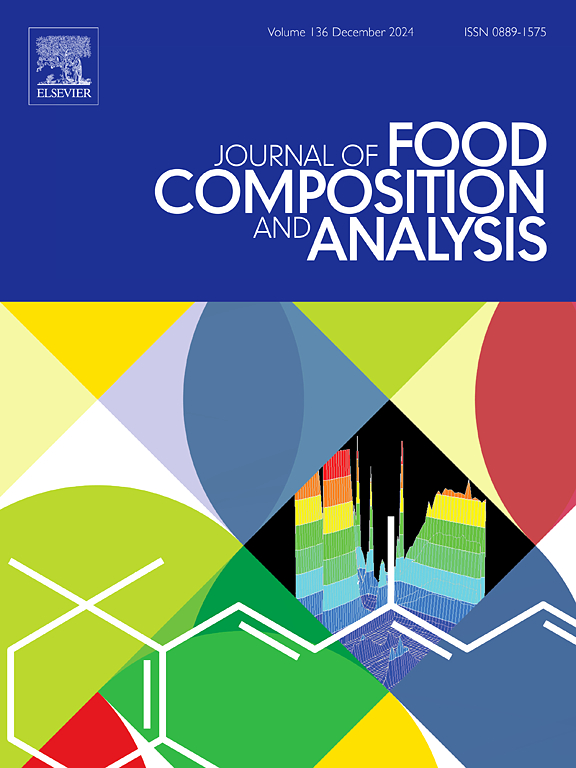Rapid characterize the changes of chemical components closely related to EEFS and LF NMR in Chuju among different drying times
IF 4
2区 农林科学
Q2 CHEMISTRY, APPLIED
引用次数: 0
Abstract
The combination of excitation-emission fluorescence spectroscopy (EEFS) and low-field nuclear magnetic resonance (LF NMR), integrated with deep learning algorithms, enhances the intelligent and rapid discrimination capability of Chuju quality under complex thermal processing conditions. First, EEFS and LF NMR were used to record EEFS and LF NMR spectra of representative Chuju samples during different drying times. Then, characteristic variables were transformed, extracted, and combined from EEFS and LF NMR spectra recorded data. Finally, parallel factor (PARAFAC), partial least squares regression (PLS), and support vector regression (SVR) have been comparatively combined in developing the prediction models. In a comparison of the constructed models, the PLS model achieved the best result, with R = 0.9950, RMSECV = 0.0617 for the training set, and R = 0.9997, RMSEP = 0.0037 for the test set, respectively. The overall results revealed that EEFS and LF NMR combined with chemometric analysis could be successfully used as a rapid method in determining the Chuju quality, and perhaps some chemical compositions of Chuju during drying processes.
求助全文
约1分钟内获得全文
求助全文
来源期刊

Journal of Food Composition and Analysis
工程技术-食品科技
CiteScore
6.20
自引率
11.60%
发文量
601
审稿时长
53 days
期刊介绍:
The Journal of Food Composition and Analysis publishes manuscripts on scientific aspects of data on the chemical composition of human foods, with particular emphasis on actual data on composition of foods; analytical methods; studies on the manipulation, storage, distribution and use of food composition data; and studies on the statistics, use and distribution of such data and data systems. The Journal''s basis is nutrient composition, with increasing emphasis on bioactive non-nutrient and anti-nutrient components. Papers must provide sufficient description of the food samples, analytical methods, quality control procedures and statistical treatments of the data to permit the end users of the food composition data to evaluate the appropriateness of such data in their projects.
The Journal does not publish papers on: microbiological compounds; sensory quality; aromatics/volatiles in food and wine; essential oils; organoleptic characteristics of food; physical properties; or clinical papers and pharmacology-related papers.
 求助内容:
求助内容: 应助结果提醒方式:
应助结果提醒方式:


